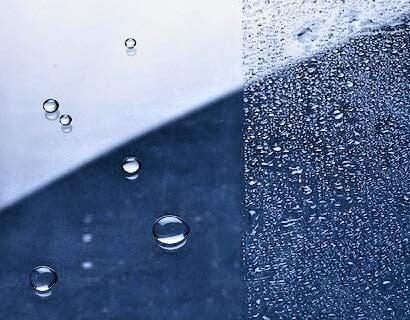In an era where material performance must meet the demands of both function and sustainability, oleophobic technology stands at the forefront of surface innovation. From electronic displays that resist fingerprint smudges to filtration membranes that reject oily contaminants, this technology offers transformative benefits across multiple industries. At Matregenix, we are pioneering material science to integrate oleophobic properties into next-generation nanofiber-based solutions.
What Is Oleophobic Technology?
The term oleophobic literally means “oil-fearing.” Oleophobic surfaces are engineered to repel oils and other non-polar substances. Much like hydrophobic materials repel water, oleophobic surfaces resist oil-based substances such as grease, sebum, and hydrocarbons. This is achieved through chemical coatings or structural modifications that lower surface energy, making it difficult for oil to adhere or spread.
How Oleophobic Surfaces Work
At a microscopic level, oleophobic surfaces are designed to minimize contact between the oil and the material. This is done using nanostructures and specialized coatings that create a high contact angle between the oil droplet and the surface. As a result, the oil beads up and rolls off rather than smearing or soaking into the material.
Matregenix incorporates advanced nanofiber electrospinning techniques to enhance oleophobic performance at the nanoscale. By carefully selecting polymers and modifying fiber morphology, we create functional surfaces that offer superior oil repellency without sacrificing breathability or flexibility.
Applications of Oleophobic Technology
1. Electronics and Touchscreens
Smartphones, tablets, and wearable devices benefit significantly from oleophobic coatings. These coatings prevent fingerprints and smudges, improving screen visibility and hygiene. The oleophobic layer also makes it easier to clean screens and enhances user experience.
2. Filtration Systems
In industrial filtration, especially in oil-water separation, oleophobic nanofiber membranes provide enhanced selectivity and durability. These materials are ideal for treating oily wastewater and for use in oil spill remediation. Matregenix’s oleophobic filtration solutions are developed to perform reliably under challenging conditions.
3. Medical and Personal Care Products
Oleophobic materials can be used in wound dressings, surgical drapes, and medical textiles to resist contamination by body oils and external pollutants. This contributes to better hygiene and reduced risk of infection. In personal care, oleophobic fibers are used in wipes and cosmetic applicators for cleaner, more effective use.
4. Textiles and Apparel
Fabrics treated with oleophobic coatings resist oil stains, making them ideal for uniforms, activewear, and outerwear. These textiles maintain their look and feel longer, reducing the frequency of washing and increasing product life—aligning with sustainability goals.
Benefits of Oleophobic Technology
-
Easy Cleaning: Surfaces stay cleaner longer and require less maintenance.
-
Enhanced Durability: Oil-repellent materials are more resistant to wear and tear caused by greasy substances.
-
Improved Hygiene: Reduces buildup of contaminants in medical and consumer settings.
-
Energy Efficiency: In filtration systems, oleophobic properties minimize fouling, reducing the energy needed for cleaning and operation.
-
Sustainability: Less reliance on harsh cleaning chemicals and extended product lifespans contribute to a lower environmental footprint.
Matregenix’s Role in Oleophobic Innovation
At Matregenix, we combine our expertise in nanofiber technology with cutting-edge surface engineering to develop oleophobic materials that outperform conventional alternatives. Our R&D efforts focus on sustainability, scalability, and multifunctionality—ensuring that each product not only repels oil but also meets industry-specific performance criteria.
We tailor our oleophobic solutions to meet the unique needs of our clients, whether in healthcare, industrial filtration, consumer electronics, or textiles. Our custom nanofiber formulations and electrospinning techniques give us the flexibility to design surfaces with specific levels of oil repellency, mechanical strength, and permeability.
Conclusion
Oleophobic technology is more than just a convenience feature it is a critical advancement that enhances performance, hygiene, and sustainability across industries. With continued innovation in materials science, particularly in the field of nanofibers, the potential for oleophobic surfaces is only beginning to be realized.
At Matregenix, we are proud to lead the way in bringing oleophobic solutions to life through high-performance nanomaterials. By bridging science and application, we’re helping to build a cleaner, smarter, and more efficient future.

